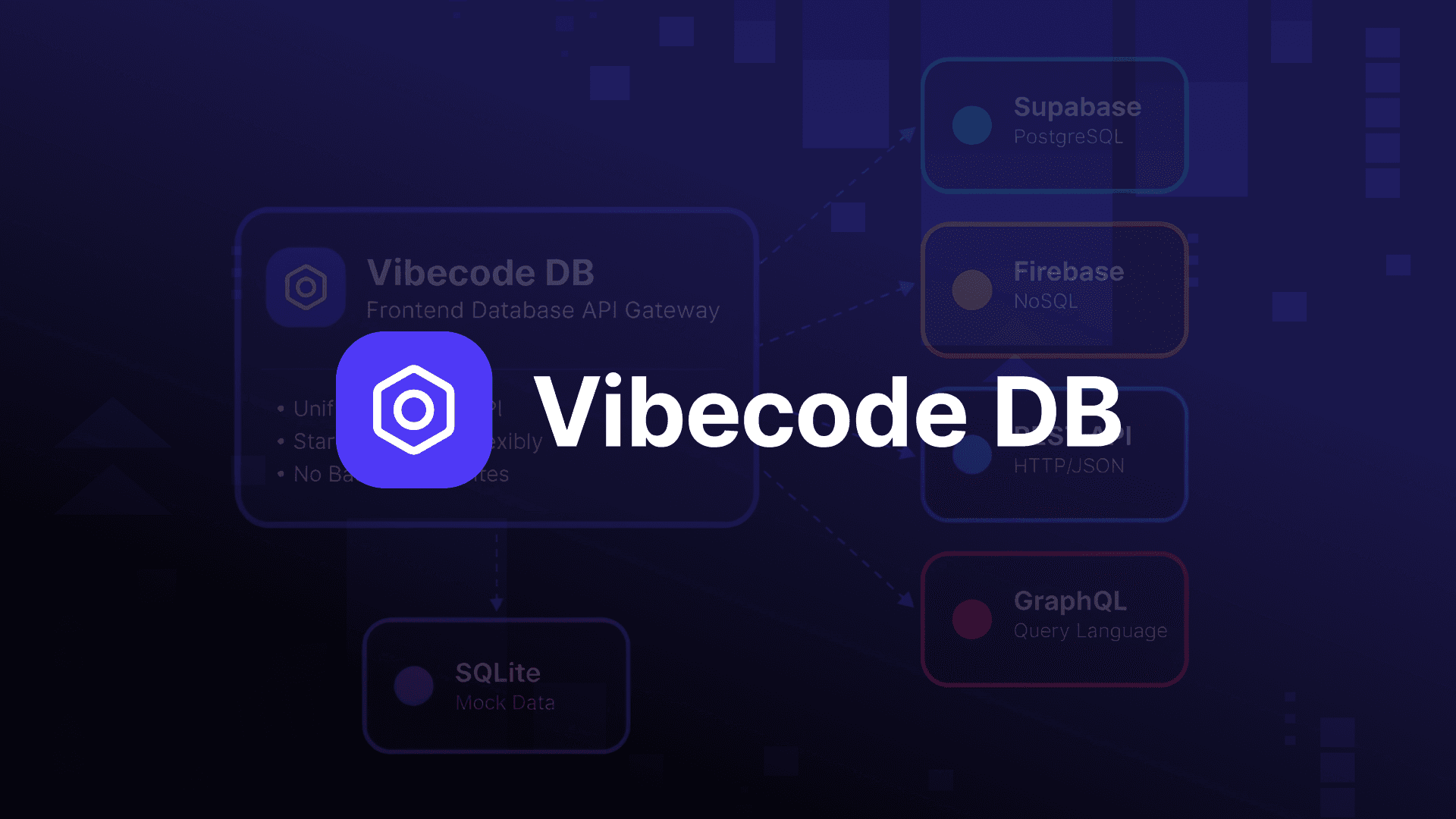Table of Contents
React India Conf 2023: The Future of React
Author

Date

Book a call
Greetings! Just a few days ago, I had the fantastic opportunity to attend React India Conf 2023 in the lively setting of Goa. As a passionate engineer at GeekyAnts, this event was an exciting journey filled with insights and learning. My enthusiasm was further fueled by the fact that my esteemed teammates, Sanket and Vidhi, were featured speakers at the event. In this blog post, I am eager to share some of the remarkable takeaways and recurring themes that resonated throughout the conference.
Performance-Driven Development in React
The journey of React has been nothing short of remarkable. It has evolved from a mere UI library into a robust ecosystem. The driving force behind this evolution? Performance-driven development. The React community now strongly recognizes the direct link between an application's performance and user engagement. Even the slightest lag, jittery interactions, or mere milliseconds of delay can result in reduced user engagement.
One standout presentation recounted the story of an e-commerce giant. Faced with diminishing user engagement, they pinpointed the lackluster performance of their main page as the root cause. Their strategy for revival was a combination of optimal loading techniques, ensuring only essential components were loaded, and a clever implementation of prefetching.
AI-Powered Prefetching: A Game Changer
While prefetching, the practice of preloading data or assets before they're needed, is not a novel concept, this e-commerce company took it to the next level. They introduced an AI agent into the mix. Instead of conventional prefetching algorithms that preload based on hardcoded rules or simple patterns, this AI agent analyzed real-time user behavior, preferences, and purchase history. Using this data, it could predict with remarkable accuracy which pages or products a user might visit next and proactively prefetch them.
This proactive approach not only reduced loading times but also provided users with a nearly instantaneous browsing experience. It's akin to having a personal assistant who anticipates your needs and ensures everything is ready before you even ask.
Enhancing Debugging with Web Vitals
Performance-driven development isn't solely about speed; it's also about consistency, reliability, and the ability to identify issues before they escalate. Web Vitals, with its suite of metrics such as Input Delay (INP), offers developers a granular insight into their application's health.
For example, INP measures the time between a user's interaction (like a click) and the browser's response. A high INP might indicate blocked main threads or heavy JavaScript executions. By focusing on metrics like these, developers can fine-tune their applications, ensuring not only speed but also a smooth user experience.
Web Accessibility: More Than a Good Practice
The importance of web accessibility in design has often been underestimated. However, at React India Conf, the emphasis was not only on the ethical aspects but also on the tangible benefits, with improved site rankings being a prime example. Accessibility becomes even more critical when considering the significant portion of the population with disabilities that affect their web interactions.
Accessibility is no longer confined to website design; it now includes incorporating accessibility considerations from the ground up, even in unit test cases. For instance, consider a button in your application. Instead of merely testing its functional aspects, developers can also ensure that it meets accessibility standards, such as proper color contrast, alt text, and keyboard navigability.
The significance of accessibility has risen significantly. React developers now have tools like @testing-library/user-event to ensure that components are not only functionally correct but also accessible.
Tests like these ensure that elements are navigable, readable, and usable, aligning with the principles of web accessibility.
Embracing React Native's Potential
If you've been contemplating delving into React Native, now is the perfect time. To truly master it, a strong foundation in native modules is essential. The conference featured discussions ranging from integrating AR/VR in React Native apps to creating home screen widgets for both iOS and Android.
React Native has firmly established itself as the go-to framework for hybrid mobile development. The promise is tantalizing: develop once and run everywhere, whether it's iOS, Android, or even the web. However, seasoned developers understand that each platform has its unique nuances, features, and limitations. Bridging these differences and unlocking the full potential of React Native requires a powerful concept: Native Modules.
The Foundation: Native Modules
At its core, React Native serves as a bridge between JavaScript and native code. While many standard functionalities are seamlessly handled within the framework, there are instances where delving into platform-specific code becomes necessary. This is where Native Modules come into play.
Native Modules facilitate direct communication between JavaScript and native platforms. They empower developers to access functionalities that are not yet available in React Native or to optimize performance-critical operations.
AR/VR: Bridging Reality and Virtuality
The conference showcased an exciting frontier where React Native's capabilities shine: Augmented and Virtual Reality (AR/VR). As the lines between the real and virtual worlds blur, mobile apps are expected to offer immersive experiences.
While JavaScript-based solutions can achieve basic AR/VR effects, truly immersive and performance-critical experiences require a more direct integration with native platform capabilities. By using native modules, developers can leverage advanced AR/VR SDKs like ARKit (iOS) or ARCore (Android), seamlessly integrating them into their React Native applications. The result? Rich, responsive, and fluid AR/VR experiences that can rival natively developed applications.
Home Screen Widgets: A Glimpse into Apps
Another captivating topic at the conference was the creation of home screen widgets using React Native. Widgets, which are small app-specific windows, provide users with quick information or actions without the need to open the app itself. With platforms like iOS 14 and Android 12 enhancing widget functionalities, the demand for widgets has soared.
However, creating widgets in a pure JavaScript environment is not straightforward. It requires an in-depth understanding of platform-specific lifecycles, UI guidelines, and data refresh policies. Native modules come to the rescue, acting as a bridge between the React Native environment and platform-specific widget frameworks. Developers can design and control widgets, ensuring that the user interface remains consistent with the main app while delivering optimal performance and responsiveness.
Skia: The Game Changer
One presentation that stood out was on animations using Skia. Skia is a graphics engine, and when combined with React Native, it offers endless possibilities, delivering smooth, seamless, and interactive animations.
For those unfamiliar, Skia is an open-source 2D graphics library with common APIs that work across various hardware and software platforms. It's the engine Chrome uses for rendering. So, why is it making waves in the React Native world?
- Performance Enhancement: With Skia, React Native animations can tap into the GPU's power, resulting in smoother transitions, reduced jank, and an overall enhanced user experience. It has empowered developers to push the boundaries of what's possible while maintaining optimal performance.
- Enhanced Visuals: Skia offers shaders, gradients, shadows, and more. It provides a wide range of graphical tools that enable React Native developers to create more visually appealing animations. Think of gradients that flow seamlessly, shadows that mimic real-world interactions, and animations that align more closely with user expectations.
- Cross-Platform Consistency: One perpetual challenge with React Native has been maintaining consistent animations across platforms. Skia, with its unified graphics engine, addresses this issue. Animations feel and respond similarly, whether on an Android device or an iPhone.
- Improved Debugging: The fusion of React Native with Skia introduces enhanced debugging capabilities. Developers can gain insights into frame rates, rendering times, and potential bottlenecks, ensuring that animations remain flawless across devices.
At the conference, a demonstration showcased a React Native app harnessing Skia. The app featured intricate animations, from swirling gradients to real-time shadow shifts based on user interactions. The best part? It ran smoothly on both Android and iOS, underscoring Skia's potential.
AI: The Game Changer
In the midst of the captivating revelations at React India Conf 2023, the fervor around Artificial Intelligence (AI) was undeniable. The corridors were abuzz, not just with the potential of AI but with its real-world implications in the React ecosystem.
The narrative of AI has often been centered around simplifying tasks or automating processes. But what the conference spotlighted was an elevation of AI's role. AI is no longer about mere task automation; it's about amplification. In the hands of a skilled team, integrating AI means not just streamlining operations but supercharging productivity. We're not just talking about a linear increase; it's an exponential surge, encapsulated beautifully in the idea of moving from "x to 10x".
However, with the meteoric rise of AI, a subtle undercurrent of apprehension exists among developers. Would AI replace developers? Would coding become obsolete?
Embracing AI, Not Fearing It
But here's the golden insight from the conference: AI is not a developer's adversary; it's an ally. AI tools and integrations within the React space aren't about replacing developers but augmenting their capabilities.
- Faster Debugging: Think of AI-driven tools that can predict potential bottlenecks in your React app even before they manifest. Rather than hours spent in debugging, developers can proactively rectify issues.
- Enhanced UX Design: AI can analyze user behavior, helping developers craft more intuitive UI/UX designs that resonate with the end-users.
- Real-time Content Adaptation: With AI, React apps can modify content in real-time based on user preferences or behaviors, ensuring a more personalized user experience.
- Elevated Team Collaboration: AI-driven collaboration tools can predict project timelines, resource allocations, and even potential team bottlenecks, ensuring smoother project executions.
As developers, the essence is to evolve and adapt. AI represents the next frontier of this evolution. Instead of perceiving it as a threat, embracing it means harnessing a power that can transform the very fabric of how we develop, design, and deliver in the React space.
Reflecting on the Confluence
For all the React enthusiasts and developers out there, the message is crystal clear: The future beckons, radiant and promising. It's not about coding harder; it's about coding smarter. With AI by our side, the horizons are limitless.
Here's to innovation, integration, and inspiration. Until our paths cross again! 🚀🧠🔥
Dhanyavaad! 🙏🏽
Dive deep into our research and insights. In our articles and blogs, we explore topics on design, how it relates to development, and impact of various trends to businesses.


